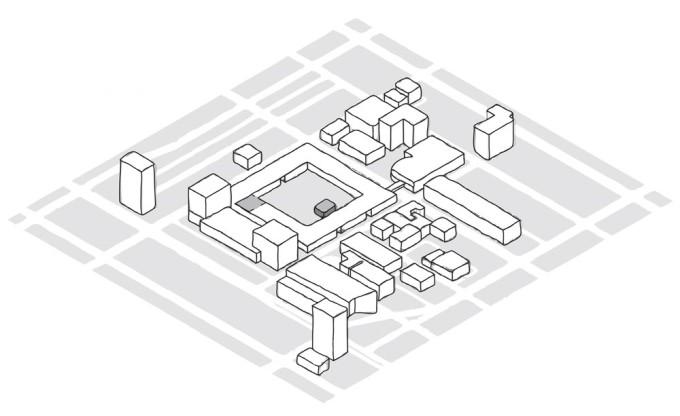Last year, Ryerson took part in Earth Hour by shutting off 95 per cent of lights on campus. As the university gets ready to do it again on March 26, Kai Benson looks at how sustainable Ryerson is the rest of the year
For an hour this week, Ryerson will be immersed in darkness. The lamps in the library, the lighting in the offices, the panels in the classrooms— all of them will flicker off for Earth Hour at 8:30 p.m. on March 26. Even though it doesn’t make much of a difference in Ryerson’s energy consumption, it is meant to reflect the university’s stance on sustainability.
In recent years, Ryerson has taken major steps towards making the campus an environmentally sustainable space. Between 1994 and 2002, the university cut water consumption by 50 per cent, heating energy consumption by 25 per cent and electrical energy consumption by 30 per cent. By modernizing as many systems as possible, Ryerson’s persquare- foot energy consumption became one of the lowest among Ontario universities. Ryerson also recently installed an ozone-friendly cooling system and the George Vari Engineering and Computing Centre installed a “green roof,” which replaces a traditional flat roof with soil and vegetation. Ryerson is also incorporating sustainable initiatives into the designs of new buildings like the Student Learning Centre and uses recycled building materials wherever possible. In 2008, the university also purchased a ride-sharing program through RideShark.com, which allows students, faculty and staff to find carpool partners close to their homes.
But Ryerson still has a long way to go until it can call itself a truly green campus. The university’s annual electrical power consumption is currently 53,000 megawatt hours, which is enough to power 5,096 Toronto households. The university still wastes significant amounts of energy by leaving lights on during daytime classes in brightly-lit rooms and keeping some lights on overnight. The older buildings on campus also pose a problem since they are not equipped with energy- efficient heating and cooling systems. In some cases, inadequate insulation in buildings like Kerr Hall leads to energy leaks. The university is trying to incorporate as many sustainability initiatives as possible but it takes time. Ian Hamilton, the outgoing assistant vice president of Campus Planning and Facilities, says the university is always looking for ways to make the campus greener. “You can always think of things to do next time.”
Ryerson has been recognized for its efforts so far and has received several environmental awards in the last few years. In 2009, Ryerson’s South Bond building became the first university building in Ontario to receive the Leadership in Energy and Environmental Design (LEED) gold certification. Ryerson also received a Garden of Recognition award from the City of Toronto last November, which highlighted the university’s work towards beautifying the campus and making it a green urban space.
Hamilton says participating in Earth Hour is an extension of the university’s green efforts and aims to raise awareness that small actions can make a big difference. Earth Hour was launched in 2007 in Sydney, Australia, by the World Wildlife Fund to encourage people across the world to turn off their lights for an hour. It is meant to give a visual representation of how much can change if everybody does a little bit—not just for an hour, but for all 8,760 hours of the year. Its main goal is to encourage people to “go beyond the hour” by making small changes to their lifestyles. This year, at least 400 cities in Canada and thousands more from across the globe are expected to take part. “I wouldn’t say the savings are significant,” says Hamilton. “The real potency of it is that it raises awareness.”
But for students, being environmentally- conscious can seems too costly. Most live in apartments more likely to be equipped with old heaters and refrigerators than newer, high efficiency appliances. The price tag of sustainable products can often be off-putting to cash-strapped students trying to save a few bucks.
Josh Laughren, director of Climate and Energy for WWF-Canada, says everyone can live green by choosing to buy items made by environmentally-conscious producers. “As a consumer, the products we buy have an impact, not only on the environment but on the companies,” he says. The switch often doesn’t cost money but involves thinking before buying.
“It’s only limited by your imagination and your lifestyle. I’ve seen everything from really hard-core people, like a family who went a whole year without using any petroleum products, which is really hard to do, to people who take stay-cations— when they had time off, they would just relax at home rather than fly or drive somewhere.”
Laughren reminds students who choose to participate in Earth Hour not to be extreme. “Number one, stay safe. Leave on essential lights and don’t burn your house down with candles.”











student
Earth Day is a joke — it’s been hijacked by corporations to enhance eco-branding and provide a Green-friendly image.
WWF-Canada is a wolf in sheep’s clothing.